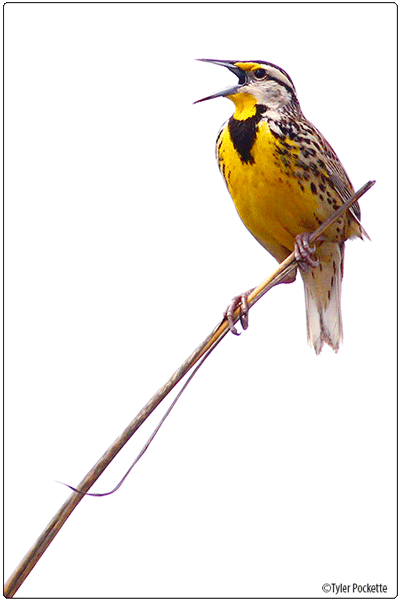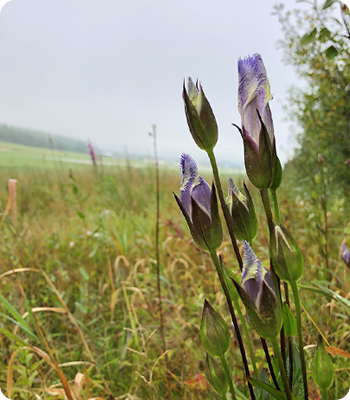
Welcome to a special effort to conserve and restore Vermont’s grasslands and the wildlife within.

the state-threatened Eastern Meadowlark.
The loss and degradation of grassland habitat is the main reason why grassland birds have experienced the steepest population declines of all bird groups in North America. Yet, our state holds a unique opportunity to protect these declining habitats, thanks to Vermont’s diverse working and conserved lands.
That’s why all Habitat Stamp donations earned in May will specifically fund grassland restoration and protection efforts across the state!
Grasslands Are Special Places
Vermont would look very different without grasslands. These special places are part of Vermont’s beauty and offer wonderful places to view wildlife and wildflowers, enjoy grand views, hunt, hike, and find solitude in the fresh air. Grasslands expand not only our views of the mountains and streams, but also the very quality of life we enjoy in our state.
Dominated by grasses, sedges and forbs with little to no tree or shrub cover, grasslands provide precious habitat for rare and uncommon bird species including the Eastern meadowlark, bobolink, Northern harrier, American kestrel, upland sandpiper, and grasshopper sparrow. They are also home to many other species such as bees, butterflies, turtles, whip-poor-wills, turkeys, woodcock, white-tailed deer, and more!
We Don’t Do It Alone
Conserving and restoring Vermont's grasslands would not be possible without our many conservation partners and, crucially, the farmers actively working lands on our WMAs to maintain grasslands.

Where are Vermont's Grasslands?
Vermont’s largest and most contiguous grasslands occur in the Champlain Valley and, to a lesser extent, the Connecticut River Valley and the area around Lake Memphremagog. There are also numerous smaller grasslands scattered across the rest of the state. Many of the larger examples are the result of current or past agricultural practices. Grassland habitat can also include sandplain communities and even human-created grasslands such as those found along airports.
Visit a Grassland and Bring Your Binoculars!
Several of our public Wildlife Management Areas have Grassland Bird Habitat to enjoy:
What You Can Do
Support Restoration Efforts with Vermont Habitat Stamp
Buy a 2024 Habitat Stamp today and your donation will directly support grasslands on the ground. The Habitat Stamp makes an enormous impact on the lasting work we and our partners can accomplish, from public land conservation to invasive species control. Remember, your donation also leverages a federal match, turning a $15 donation into almost $45 on the ground, specifically earmarked for grassland conservation projects.
Delay Mowing When Able
Bobolinks, savannah sparrows and eastern meadowlarks build nests right on the ground, among the grasses and wildflowers. Deer fawns, wild turkey chicks and other animals also take refuge in grass fields.
To help wildlife rear their young, landowners who do not need to mow for animal forage can accommodate nesting birds and other young wildlife by cutting late in the summer, preferably after August 1.
Landowners who face a loss of income from delayed mowing can apply for assistance through the Natural Resources Conservation Service or The Bobolink Project.
Steward for Wildlife with EQIP
The Environmental Quality Incentives Program (EQIP) provides information and financial incentives for landowners to manage their land for wildlife. A Vermont Fish & Wildlife Department biologist will walk your land with you and identify ways you can improve wildlife habitat on your property.
With Support From
*Donations of $15.00 and more receive a 4"x5" Habitat Stamp sticker in the mail. A Habitat Stamp is not required to hunt, fish or trap, nor do you have to buy a sporting license to donate.

